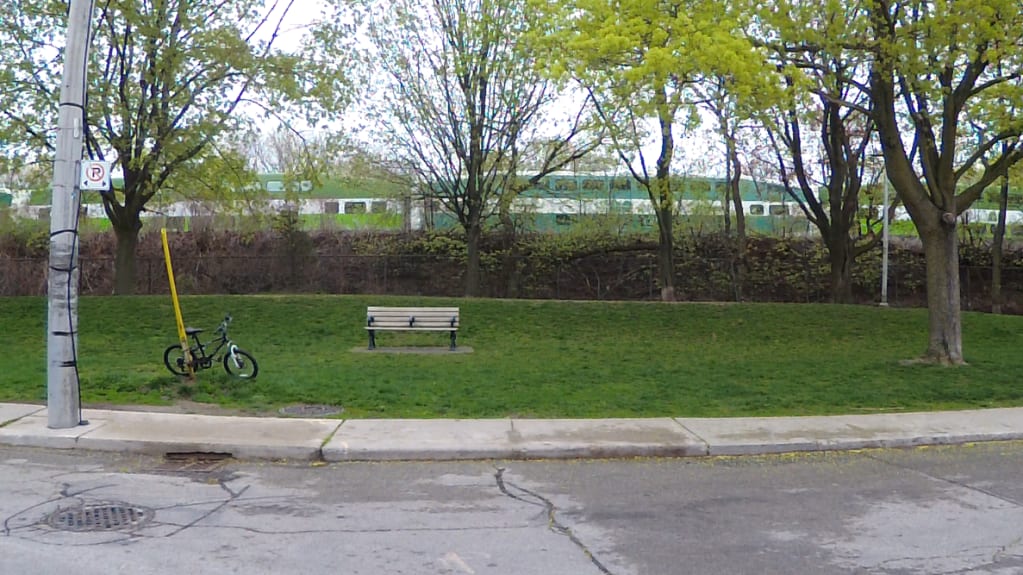Simulating sound from Ontario Line and GO Trains in East York
How much noise will come from passing trains once the Ontario Line opens? Metrolinx finds out.
Sep 23, 2021
What do the Riverside and Leslieville neighbourhoods have in common with Stonehenge?
Advanced technology was used in these areas to record the sound of passing vehicles, create simulations of future sounds and give people the opportunity to compare the two.
An interactive sound demonstration for the Ontario Line will give residents an opportunity to listen to recordings taken at four spots along the tracks where GO trains pass through Riverside and Leslieville. They will also be able to compare this with simulations of what it will sound like once the Ontario Line is complete – with the addition of noise walls, as noted in the early works report released today (Sept. 23).
Actual recordings were used to ensure the accuracy of current sound levels. (AECOM photo by Brian Bulnes)
“The technology is very similar to surround sound,” said Maria Zintchenko, a project manager at Metrolinx. “You will hear the sound of an individual train – a GO train and an Ontario Line train moving behind the future noise walls.”
The videos will also give residents an idea of what they can expect to see when a train moves behind noise walls.
An online sound demonstration will help Riverside and Leslieville residents to compare the sound level of a passing GO train today with what they can expect once noise walls are in place. (AECOM photo by Brian Bulnes)
“The noise walls that you are going to see are for illustrative purposes,” said John Potter of the Metrolinx Design Division. “We are still developing a comprehensive, integrated design plan, and we will be consulting with the community before it is finalized.”
The online sound demonstration technology was developed by AECOM, an infrastructure consulting firm, who worked with Highways England to develop and deploy pioneering immersive sound demonstrations ahead of highway improvements near a renowned World Heritage Site – Stonehenge.
This made it possible to benchmark noise and visual impacts of nearby upgrades to the A303 highway and share information with stakeholders.
This technology has also been used to guide planning for acoustically sensitive, landmark buildings in Great Britain – London’s Waterloo Station, the Theatre Royal in Glasgow and the future replica Jacobean playhouse, Shakespeare North.
While the exact plans for noise walls, as well as landscaping, are still the subject of consultation with the community, sound demonstration modeling was based on a transparent design, like the one in this in this image. (AECOM image by Tanner Johnson)
Although sound demonstrations have previously been prepared by AECOM and other consultants for rail projects in the UK and Australia, this work in Toronto is believed to be the first time immersive sound demonstrations of this kind have been used in Canada in an environmental and transit noise context.
Residents will be able to compare sound at four locations.
- The intersection of De Grassi and Queen, from the Bonjour Brioche restaurant
- Bruce Mackey Park at Wardell Street, south of Cummings
- The corner of Paisley and Booth, at the very north end of Jimmie Simpson Park
- First Avenue on its east end
Additional sound demonstrations are in development for Jimmie Simpson Park and Tiverton Parkette and will be released in the coming weeks.
To use the sound demonstration, please click here.
by Mike Winterburn Metrolinx communications senior advisor
